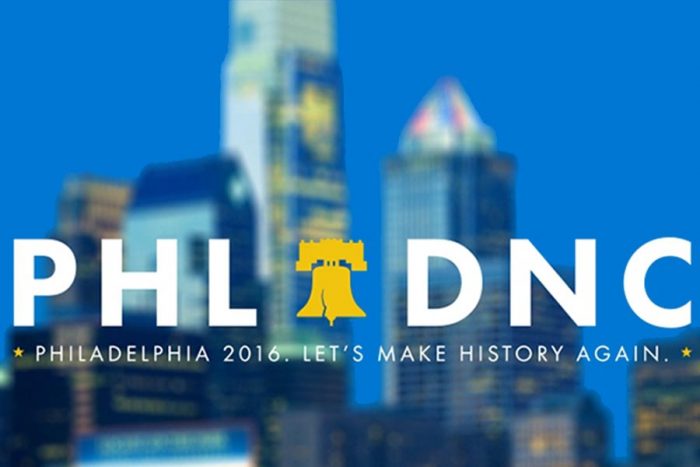

While attendees applauded at lines about American exceptionalism at the Democratic National Convention, last Wednesday police found 18-year-old Joel Montañez gunned down in Fairhill, a deeply impoverished community in North Philadelphia. In a neighborhood consumed by violence because of the heroin trade, Montañez wasn’t the first Latino male to die, and he won’t be the last. Yet no major political figure at the DNC raised awareness to problems in communities like Fairhill even when talking about issues impacting Latinos.
The delegates and other attendees who visited Philadelphia last week stayed in Center City and probably saw a glimpse of South Philly’s Mexican immigrant community. However, few, and possibly no one, saw Latinos who live on the city’s north side where the nation’s third-largest Puerto Rican population resides, a community that has had significant presences in the city since the 1950s. Most coverage about Latinos in the city dealt with visitors calling for immigration reform and protests that demanded the closing a family detention center in near-by Berks County.
Philadelphia represents a microcosm regarding the simplistic strategy of the Democratic Party’s outreach to Latinos. While politicians seek the Latino vote by taking a humane approach to immigration reform, the needs and concerns for Latinos in places like North Philadelphia have gone unheard. Both parties have concentrated their efforts on immigration while ignoring other issues plaguing impoverish Latino communities. In fact, issues regarding growing problems like concentrated poverty were never addressed at either convention.
However, several local journalists sought to asks residents on the north side about their opinions regarding the convention. Their views revealed a population disillusioned by the political process.
The journalists interviewed residents in Fairhill, which according to an infographic has a 58.9 poverty rate, with 31.2 percent of residents living in deep poverty (less than $12,000 for a family of four) and 71.6 percent of children living in poverty. When asked about the convention, local resident Carmen Torres said, “Every election…i t’s still the same. Drugs on the corner, dead [people] under the bridge.” Torres also expressed her belief that no politician can fix her community. Another resident, Ruth Marquez, said, “Everyone, everyday, is hustling to figure out where you’re getting your food from… Everything that goes on downtown, to me, is like a showboat.” The article closed with local resident Adam Palza, who said, “Some of them need to come down here and see this neighborhood… We’re stuck here.”
In this video, local residents talk about life in Kensington, a neighborhood in North Philadelphia consumed by the heroin trade
As one of America’s poorest city, Philadelphia faces significant challenges with a poverty rate at 26 percent as of 2016. A series of articles from Al Jazeera America reported that nearly one-quarter of the city’s adult population lacks basic literacy and more than half don’t have the literacy and work skills for the knowledge-based economy. From 2009 and 2013, the percentage of public school students who had experienced homelessness increased by 73 percent. The city has become the center of the heroin epidemic and it’s quite common to see people doped up on heroin on public transportation or even found dead in public areas. The public schools have been under state control since 2001. Enrollment has dropped and the districts budgets have experienced serious cuts. A report from the city’s controller in 2015 inspected 20 of the city’s school and said the buildings were “deplorable and dangerous environment for kids.”
Latinos in Philadelphia have the highest poverty rate at 44 percent and live in some of the most violent neighborhoods. In 2011, Al Día, a Philadelphia-based Latino news organization, reported that Latino males had the highest dropout rate in the city at 51 percent. Even worse, a study that followed about half of the Latino males between the ages of 18 and 24 who dropped out of high school found them under the control of the criminal justice system. These grim statistics regarding the city and Latinos on the north side will take years to turn around.
UCLA Professor of Anthropology Philippe Bourgois discusses his field work during his eight-week stay in a Puerto Rican “ghetto” in North Philadelphia. His work “illustrates how in these communities a hierarchical and hungry drug economy has filled the void left by urban de-industrialization.”
Despite politicians’ optimism in the American Dream, this promise is a distant reality for many residents in communities like North Philadelphia. The boot-scrape narrative isn’t enough to alleviate a community that has experienced disinvestment and neglect from elected officials. While immigration and the Puerto Rican debt crisis are crucial matters, resolving them won’t change the living circumstances for this community and others similar to it. Both major parties and political organizations can either take action to resolve these issues, or remain oblivious to them out of fear of reinforcing negative portrayal of Latinos and hope that these problems will improve on their own. Considering the fact that the two presidential candidates haven’t addressed issues like concentrated poverty, it appears that these problems will continue to go unaddressed.
***
Originally from Allentown, Pennsylvania, Aaron G. Fountain, Jr. is a Ph.D. student in the Department of History at Indiana University-Bloomington. Twitter: @aaronfountainjr



After read a couple of the articles on your website these few days, and I truly like your style of blogging. I tag it to my favorites internet site list and will be checking back soon. Please check out my web site also and let me know what you think.
http://trio4d.com/
http://trio4d.com/promo-bagi-player-trio4d.html
http://trio4d.com/daftar-member.html
http://trio4d.com/cara-bermain-togel.html
http://trio4d.com/informasi-pasaran.html
http://trio4d.com/buku-mimpi.html